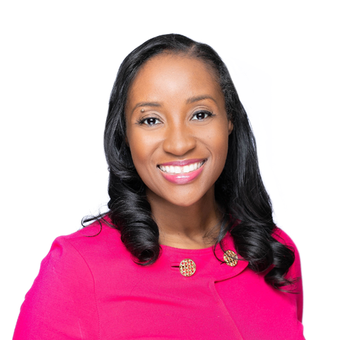Fox News Flash top headlines for March 16
Fox News Flash top headlines are here. Check out what's clicking on Foxnews.com.
American women worked 74 days into 2022 to catch up to what men earned in 2021, making Tuesday "Equal Pay Day." To mark the faux holiday, President Biden and Vice President Harris regurgitated misleading talking points about pay equity and rehashed tired leftist policy ideas that place too much emphasis on the government’s interference in the workplace and too little on personal agency. Biden is peddling a pro-union, pro-bureaucrat agenda that works against women, not with them.
The President’s Equal Pay Day proclamation framed pay equity as an issue of "justice, fairness and dignity" and used the oft-cited pay gap statistic to support his allegation of widespread "outright discrimination" in the American workforce. What woman would want to work in a society that mistreats her so badly? Yet, 77 million women do. Missing from the pay gap discussion is critical context.
PELOSI MARKS EQUAL PAY DAY WITH LABOR SECRETARY MARTY WALSH, SAYS NEW DATA IS ‘HEARTBREAKING’
The Bureau of Labor Statistics calculated that the average woman working full-time, year-round, for wages or a salary earned 82 cents for every dollar paid to their average male counterpart. For minority women (except Asian women) the pay gap is even greater. However, this is a raw data point that does not control for occupational, educational and other factors–choices that men and women make. For example, the most common jobs for women tend to be lower-paying jobs. Women work fewer hours–an average of five fewer hours per week–compared to men.

Miami Beach, Florida, El Presidente grocery store, employee bagging groceries . (Photo by: Jeffrey Greenberg/UCG/Universal Images Group via Getty Images) ((Photo by: Jeffrey Greenberg/UCG/Universal Images Group via Getty Images))
Increased educational attainment over the past few decades has helped to narrow the pay gap, but may not be enough to close it. Women earn more degrees than men today, but young men tend to pursue college majors that lead to higher-paying jobs. Women seeking fulfillment in future careers opt for early-childhood education and social work over engineering and physics, but that comes at a paycheck cost.
Earnings for college-educated men and women start out close to equal but diverge in their mid-20s as they make different employment choices related to the family. Many women seek greater flexibility, whether to raise children or care for family members. Two out of three women rank greater work-life balance as their top concern versus nearly two of three men who rank income and benefits number one. Simply put, men are paycheck maximizers while women are flexibility maximizers.
BIDEN SIGNS ORDER TO PROMOTE PAY EQUALITY FOR EMPLOYEES OF FEDERAL CONTRACTORS
When controlling for these factors, Payscale.com calculated that women actually earn "$0.99 for every $1 men make" making the pay gap just a penny. Uncontrolled pay gaps for Black, Hispanic, and Native American women of $0.79, $0.78 and $0.71, respectively shrink to just $0.98, $0.99 and $0.99, respectively, when additional factors are controlled. Asian women, who have a very small uncontrolled pay gap of $0.97, actually outearn white men ($1.03).
So how do we go about closing these pay gaps? The left has rallied behind the Paycheck Fairness Act as a means of mitigating "sex-based pay discrimination while ensuring greater transparency and reporting of disparities in wage." First, sex-based discrimination is already illegal thanks to the Equal Pay Act of 1963 and the Civil Rights Act of 1964. Paycheck Fairness adds no new protections but makes it easier to lodge class-action lawsuits against companies–a windfall for trials lawyers, not for women.
CLICK HERE TO GET THE OPINION NEWSLETTER
The President is right that there are "barriers that women face in accessing good-paying jobs and meeting caregiving responsibilities… which often prevent women from joining and staying in the workforce." If only he would shine attention on anticompetitive occupational licenses, a bipartisan pain point. State permission slips to work in a specific job (such as florists, music therapists, and even eyebrow threaders) are often arbitrary, impose excessive requirements unrelated to the job, and are costly for job-seekers. They vary from state to state, contributing to the over 30% unemployment rate among military spouses. They often have no real public health or safety rationale. Instead, they keep marginalized women–particularly women of color, immigrants and those with criminal records–away from gainful employment and entrepreneurship. Occupational licenses often exist to protect incumbent businesses, who lobby for these barriers, from fair competition.
The right plan for Washington is to demolish real barriers to opportunity and clear the way for flexible work–not just on Equal Pay Day but every day.
At the federal level, Biden’s proposed policies would directly destroy flexible opportunities that 51 million independent workers depend upon. The president is committed to boosting organizing and collective bargaining in America. He advocates for the union-friendly, anti-worker Protect the Right to Organize Act (PRO Act). Yet, despite leftist pressure for greater unionization of the American workforce, union membership hit an all-time low.
Women don’t want to be forced into unions or forced to lose more of their hard-earned paycheck to union dues. Millions of women are opting out of the traditional employer-employee work model that organized labor needs for leverage in negotiations. Women now comprise 55% of new freelancers up–from 46% in 2020–with growth concentrated among women for whom this is their primary source. Independent contracting also offers women flexibility and a host of other economic, health and wellness benefits.
CLICK HERE TO GET THE FOX NEWS APP
Women should be paid what they’re worth. Let’s inform women about how personal choices impact pay and respect the decisions they make. The right plan for Washington is to demolish real barriers to opportunity and clear the way for flexible work–not just on Equal Pay Day but every day.



